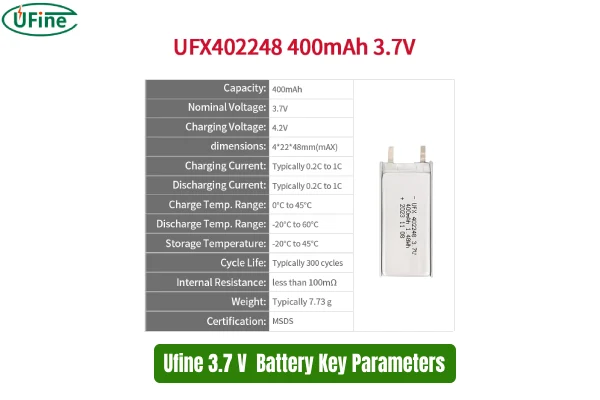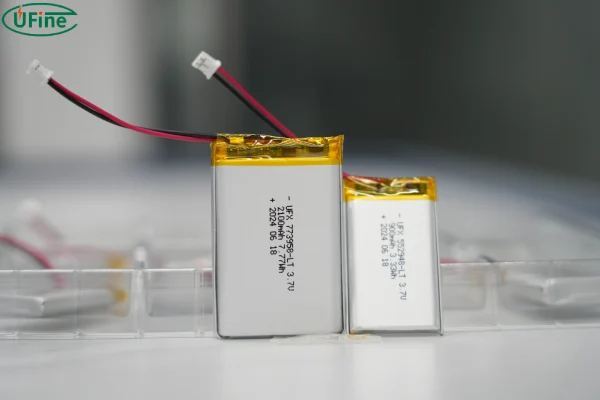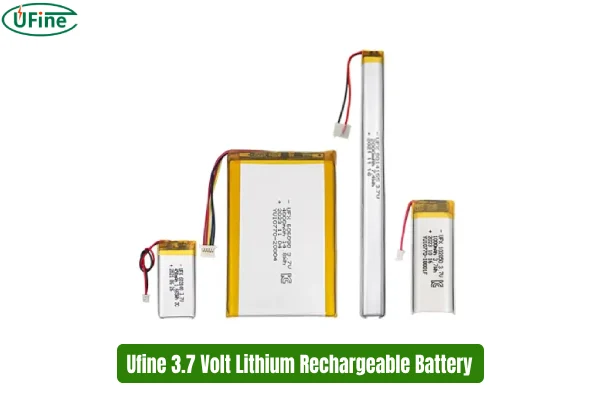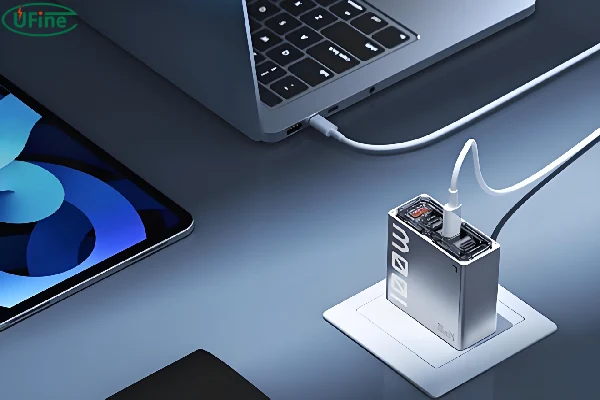The world runs on batteries, and at the heart of many devices lies the versatile and powerful 3.7 volt lithium rechargeable battery. From smartphones and laptops to power tools and electric vehicles, these compact energy sources fuel our modern lives. But with a vast array of options available, choosing the right 3.7 volt lithium rechargeable battery can feel like navigating a complex maze. This comprehensive guide will equip you with the knowledge to confidently navigate this landscape, ensuring you select the perfect battery for your specific needs.
Part 1. 3.7 V lithium rechargeable battery overview
A 3.7 volt lithium rechargeable battery is a marvel of modern engineering, offering a high energy density and long lifespan within a compact package. These batteries are built upon lithium-ion technology, which utilizes lithium ions to transfer energy between the anode and cathode, creating a flow of electricity.
Key Characteristics:
- High Energy Density: 3.7 volt lithium rechargeable batteries pack a significant amount of energy into a small space. This makes them ideal for devices where size and weight are crucial, like smartphones and laptops.
- Long Lifespan: Compared to traditional batteries, lithium rechargeable batteries boast a significantly longer lifespan, enduring hundreds or even thousands of charge cycles before experiencing significant capacity degradation.
- Lightweight and Compact: Their compact size and lightweight design make them perfect for portable devices and applications where space is limited.
- Fast Charging: Many 3.7 volt lithium rechargeable batteries can be charged quickly, minimizing downtime and maximizing convenience.
Part 2. 3.7 V lithium rechargeable battery type
The world of 3.7 volt lithium rechargeable batteries is diverse, with different chemistries offering unique advantages and drawbacks. Understanding these variations is crucial for choosing the right battery for your specific needs.
1. Lithium Polymer (LiPo): Flexibility and Lightweight Design
LiPo batteries are known for their flexibility and lightweight design. They are commonly found in devices where space is limited, such as smartphones, tablets, and drones.
Key Features:
- Flexibility: LiPo batteries can be molded into various shapes, allowing for greater design freedom in devices.
- Lightweight: Their lightweight nature is ideal for portable devices where weight is a concern.
- High Energy Density: LiPo batteries offer a high energy density, packing a lot of power into a small space.
Applications: LiPo batteries are widely used in smartphones, tablets, drones, RC toys, and other portable devices.
2. Lithium Ion (Li-ion): The Workhorse of Modern Technology
Li-ion batteries are the most common type of lithium rechargeable battery, offering a good balance of performance, cost, and lifespan. They power a vast range of devices, from laptops and power tools to electric vehicles.
Key Features:
- High Energy Density: Li-ion batteries offer a high energy density, providing long run times for devices.
- Long Cycle Life: They boast a respectable cycle life, typically exceeding 500 cycles, making them a reliable choice for long-term use.
- Wide Availability: Li-ion batteries are readily available in various sizes and capacities, making them a versatile choice for different applications.
Applications: Li-ion batteries are found in laptops, smartphones, tablets, power tools, electric vehicles, and many other devices.
3. Lithium Iron Phosphate (LiFePO4): Safety and Longevity for Demanding Applications
LiFePO4 batteries are known for their exceptional safety and long lifespan, making them ideal for high-performance applications and devices where reliability is paramount.
Key Features:
- High Safety: LiFePO4 batteries are inherently safer than other lithium-ion chemistries due to their stable chemical composition, making them less prone to overheating and fires.
- Long Cycle Life: They boast an impressive cycle life, typically exceeding 2,000 cycles, meaning they can be charged and discharged numerous times before experiencing significant capacity degradation.
- Excellent Thermal Stability: LiFePO4 batteries maintain their performance even at high temperatures, making them suitable for various environments.
- Environmentally Friendly: They are environmentally friendly, as they do not contain heavy metals like cobalt or nickel, reducing environmental impact.
Applications: LiFePO4 batteries are ideal for electric vehicles, solar energy storage systems, backup power solutions, and off-grid living setups.
Part 3. Key parameters

To make an informed decision, it’s crucial to understand the key parameters that define the performance and capabilities of a 3.7 volt lithium rechargeable battery.
1. Capacity (mAh): The Energy Reservoir
Capacity, measured in milliamp-hours (mAh), represents the amount of electrical energy a battery can store. A higher capacity translates to longer run times for your devices and the ability to power more demanding applications.
- Example: A 2000mAh battery can deliver 2000 milliamps of current for one hour or 1000 milliamps for two hours.
2. Discharge Rate (C-Rate): Power Delivery Speed
The discharge rate, expressed as a “C” value, indicates how quickly a battery can deliver power. A higher C-rate means the battery can provide more power in a shorter time.
- Example: A 1C discharge rate means the battery can deliver its full capacity in one hour. A 2C discharge rate means it can deliver the full capacity in half an hour.
3. Cycle Life: The Measure of Longevity
Cycle life refers to the number of times a battery can be fully charged and discharged before its capacity significantly drops. A higher cycle life indicates a longer lifespan, making the battery a more valuable investment.
- Example: A battery with a cycle life of 500 can be fully charged and discharged 500 times before its capacity drops to 80% of its original capacity.
4. Voltage: The Driving Force
Voltage determines the electrical potential of the battery. A 3.7 volt battery has a specific voltage that needs to be compatible with the device it powers.
- Example: A device that requires a 3.7 volt battery will not function properly with a 3.6 volt battery.
5. Internal Resistance: Efficiency of Power Transfer
Internal resistance is a measure of how much resistance the battery offers to the flow of current. Lower internal resistance translates to more efficient power transfer and less energy loss.
- Example: A battery with lower internal resistance will deliver more power to the device, reducing heat generation and improving overall efficiency.
Part 4. Common capacities and applications
3.7 volt lithium rechargeable batteries are available in a range of capacities, each suited for specific applications.
1. Low Capacity (100mAh – 500mAh): Powering Small Devices
These batteries are commonly found in small devices like Bluetooth speakers, headphones, smartwatches, and fitness trackers. They offer a compact size and lightweight design, making them ideal for portable devices.
2. Medium Capacity (500mAh – 2000mAh): Fueling Smartphones and Tablets
This range of capacities is commonly used in smartphones, tablets, and portable power banks. They provide sufficient power for everyday use and offer a balance between size and capacity.
3. High Capacity (2000mAh – 10000mAh): Powering High-Performance Devices
These batteries are used in high-power devices like electric scooters, drones, power tools, and some electric vehicles. They offer a high energy density and long run times, making them suitable for demanding applications.
Part 5. Price
The price of a 3.7 volt lithium rechargeable battery depends on several factors, including:
- Capacity: Higher capacity batteries generally cost more.
- Type: LiFePO4 batteries tend to be more expensive than Li-ion or LiPo batteries due to their superior safety and lifespan.
- Brand: Reputable brands with a strong track record often command a higher price.
- Features: Batteries with additional features, such as fast charging or built-in protection circuits, may have a higher price tag.
Part 6: Choosing the right battery: a step-by-step guide
Choosing the right 3.7 volt lithium rechargeable battery involves a careful consideration of your specific needs, budget, and priorities. Here’s a step-by-step guide to help you make an informed decision:
1. Define Your Application Needs: What Will It Power?
- Identify your primary application: Will it be used for a smartphone, laptop, power tool, or electric vehicle?
- Determine your power requirements: What devices will it need to power, and for how long?
- Consider environmental factors: Will the battery be exposed to extreme temperatures or harsh conditions?
2. Set Your Budget: Balancing Cost and Value
- Establish a realistic budget: Consider the price range of different battery types and brands.
- Factor in long-term costs: A higher-quality battery with a longer cycle life may be a better investment in the long run.
3. Research Brand Reputation: Trust Matters
- Explore reputable manufacturers: Look for brands known for quality, reliability, and customer support.
- Read reviews and testimonials: Gain insights into the real-world performance and durability of different batteries.
4. Consider Key Parameters: Matching Specs to Needs
- Capacity: Choose a battery with sufficient capacity to meet your power requirements.
- Discharge Rate: Ensure the battery’s discharge rate aligns with your device’s needs.
- Cycle Life: Opt for a battery with a high cycle life for longer lifespan and better value.
- Voltage: Select a battery with a voltage compatible with your device.
- Internal Resistance: Consider a battery with lower internal resistance for more efficient power transfer.
5. Don’t Forget the Charger: A Vital Companion
- Compatibility: Ensure the charger is compatible with your battery’s specifications.
- Features: Look for features like overcharge protection, smart charging, and rapid charging capabilities.
Part 7: Charging and maintenance
Proper charging and maintenance are crucial for extending the lifespan of your 3.7 volt lithium rechargeable battery.
1. Regular Charging: Avoid Deep Discharges
- Regularly charge the battery: Avoid letting the battery discharge completely, as this can shorten its lifespan.
- Follow the manufacturer’s charging recommendations: Use the recommended charger and charging methods.
2. Storage: Keep it Cool and Dry
- Store in a cool, dry place: High temperatures and humidity can degrade the battery.
- Avoid direct sunlight: Sunlight can also negatively impact battery performance.
3. Inspection: Catch Problems Early
- Regularly inspect the battery: Check for any signs of damage, leaks, or corrosion.
- Address any issues promptly: Contact the manufacturer or a qualified technician if you notice any problems.
Part 8. 3.7 Volt lithium rechargeable battery manufacturers
The world of 3.7 volt lithium rechargeable battery manufacturers is diverse, with companies offering a wide range of solutions to meet various needs.
1. Ufine Battery: A Leading Force in Customization
Ufine Battery is a well-known Chinese lithium battery customization manufacturer that can tailor lithium polymer batteries, cylindrical batteries, 18650 batteries, LiFePO4, etc. to meet specific requirements for capacity, size, voltage, and shape. They offer a wide range of solutions for various applications, from consumer electronics to industrial equipment.
2. Other Notable Manufacturers
- Samsung SDI: A leading manufacturer of lithium-ion batteries for smartphones, tablets, and electric vehicles.
- LG Chem: A major supplier of lithium-ion batteries for various applications, including automotive, consumer electronics, and energy storage.
- Panasonic: Known for its high-quality lithium-ion batteries used in Tesla electric vehicles and other applications.
Part 9. Conclusion
The world of 3.7 volt lithium rechargeable batteries is dynamic and evolving, offering a wide range of options to power a more sustainable future. By understanding the different types, key parameters, and considerations outlined in this guide, you can confidently make an informed decision that meets your specific needs.
Related Tags:
More Articles

How to Choose the Best Floor Scrubber Battery for Commercial Cleaning?
Selecting the ideal floor scrubber battery ensures a long runtime, rapid charging, and minimal maintenance for efficient commercial cleaning operations.
Battery for Blower vs Battery for Leaf Vacuum: Which One Should You Choose?
Battery for blower vs leaf vacuum—learn the key differences in power, fit, and runtime to choose the right battery for your outdoor tool needs.
How to Choose the Right Battery for Blower?
Choosing the right blower battery? Consider voltage, capacity, chemistry & usage. This guide helps match the best battery for peak performance.
How to Choose the Best Insulated Battery Box for Lithium Batteries?
Choosing the Best Insulated Battery Box for Lithium Batteries? Discover key factors such as size, material, and safety for optimal protection and performance.
7 Critical Elements on a Lithium Battery Shipping Label
What must be on a lithium battery shipping label? Learn 7 key elements to ensure safety, legal compliance, and correct handling across all transport modes.






